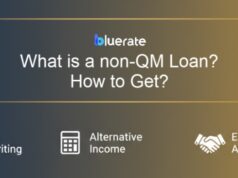Double Net Lease: What Is It and how Does It Work?
The double net lease, which is also called the “NN” or “net-net” lease is a type of lease agreement where the tenant is responsible to pay premiums to insure a building and property taxes. Unlike the single net lease, which is one that only requires the tenant to pay the property taxes, this option passes more costs to the tenant in the form of insurance payments.
While this is true, with commercial real estate that utilizes the double net lease, the landlord is still responsible for the structural maintenance costs. Every month, the landlord will receive the rent from the tenant, along with the other payments specified in the lease.
How Do Double Net Leases Work?
A net lease is similar to owning property, but the person does not have the legal title for it. Instead, they are lease agreements between tenants and landlords where the tenant covers the cost for the rent, along with other costs related to the property. The agreement can include one or several expenses, including (but not limited to), repairs, maintenance, utilities, property taxes, insurance, and other types of operational costs. Usually, a landlord will accept a much lower rent payment due to the costs related to net leases.
The double net lease is commonly found in cases of commercial real estate. For a commercial property that has several tenants, like shopping malls, insurance fees and taxes could be assigned to each tenant based on their proportion of use of the building. Even when building insurance premiums and property taxes are considered to be the tenant’s responsibility, commercial property owners need to have the property taxes passing through themselves to make sure they know about any payment issues that arise.
Double Net Leases Compared to Other Net Lease Types
With a single net lease, the tenant or lessee is responsible to pay the property taxes. These are not common.
There is also a triple net lease or NNN. With this, the lessee or tenant agrees to pay all the building maintenance, insurance, and real estate taxes. They are also expected to pay the normal costs based on the agreement, including rent, utilities, etc. With this lease, the lessee or tenant will also be responsible for all associated costs for repairs and maintenance that are needed for common areas. This type of lease is typically seen with freestanding commercial buildings. However, it can also be used with a single-family, residential rental lease.
If the maintenance costs wind up being higher than what is expected, the tenants with a triple net lease may try to get out of the lease or to receive rent concessions. As a result, many landlords prefer to have a bondable net lease. This is a type of triple net lease that stipulates that termination cannot occur before the date printed on the agreement and that the amount of rent is unable to be altered, at all.
Understanding the double net lease may seem challenging at first but gaining knowledge about what it is and how it works can be beneficial for both landlords and tenants. Be sure to keep the information here in mind to know if this type of lease should be used, regardless of if someone is a landlord or if they are a tenant.












